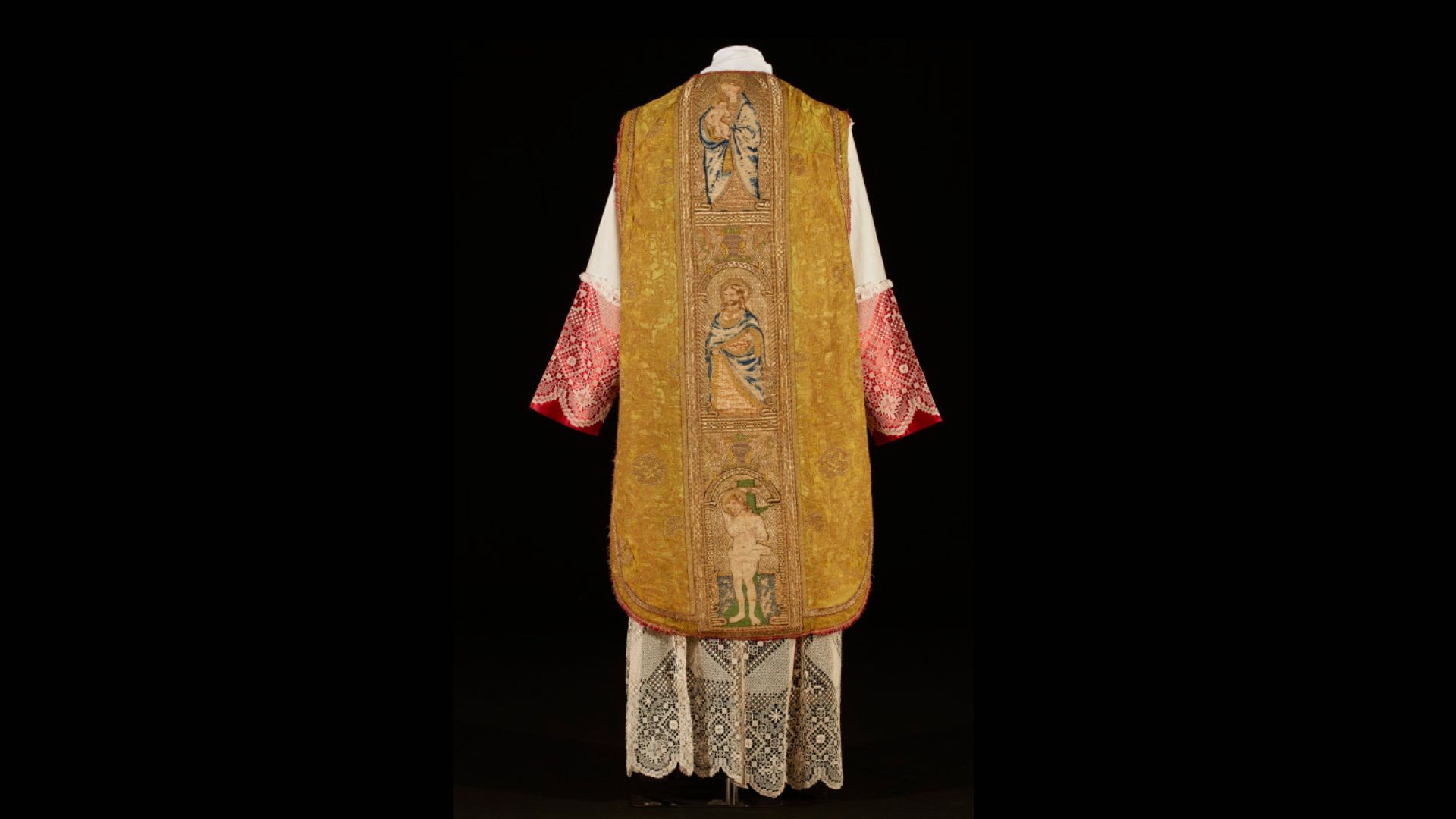The cathedral of Oristano preserves a valuable set of sacred vestments, dating from the 15th to the 19th century, a surviving part of a rich heritage attested by documents. The main patrons were the archbishops most sensitive to the liturgical and pastoral renewal introduced by the Council of Trent, who succeeded one another in governing the diocese. The origin of the fabrics must be sought outside the island territory, among the best Italian and French manufacturers. The pieces of cloth purchased from merchants were made locally or, in the 18th century, specially ordered from Turin.
The Renaissance chasuble known as Leonardo de Alagòn stands out for its rarity. The chasuble known as Leonardo de Alagòn is the oldest liturgical vestment among those preserved in the Museum. Of Spanish manufacture, it features polychrome embroidery dating back to the 15th century, while the background fabric dates back to the 16th century. The precious brocatelle, in linen and silk and acid yellow-green in color, features a Renaissance decoration with vegetal swirls that, unwinding, wrap around thistle flowers. At the center, a historiated embroidered stolon is applied, divided into three parts by niches, which house figures of the Virgin and Saints. On the front are depicted St. Andrew the Apostle, St. Pantaleo the Martyr and St. Michael the Archangel, on the back are depicted Mary with the weeping Baby Jesus, the Savior, St. Sebastian the Martyr.
The embroideries find comparison in a Catalan context in the sumptuous hangings of S. Giorgio in historiated velvet by the embroiderer Antoni Sadurnì (Barcelona, Palau de la Generalidad). The only remaining element of a hanging still documented in the 18th century, the Spanish-style chasuble is a very rare example of Renaissance embroidered hanging, among the various cases documented in Sardinia. According to tradition, it was a gift from the last marquis of Oristano, Leonardo de Alagòn (1470-77), to the Cathedral of Santa Giusta. From that church it was transferred to the new cathedral of Santa Maria in Oristano, at an unspecified time. The 2004 restoration, carried out by the company L’Ermesino (Siena), confirmed the reduction from an original set of three vestments, and allowed for a better reading of the figures of the saints, highlighting the arrows of St. Sebastian and the figure of St. Michael the Archangel, who had been shortened and deprived of his feet in an adaptation of the chasuble in which the lower edge of the hem had been folded and sewn.
